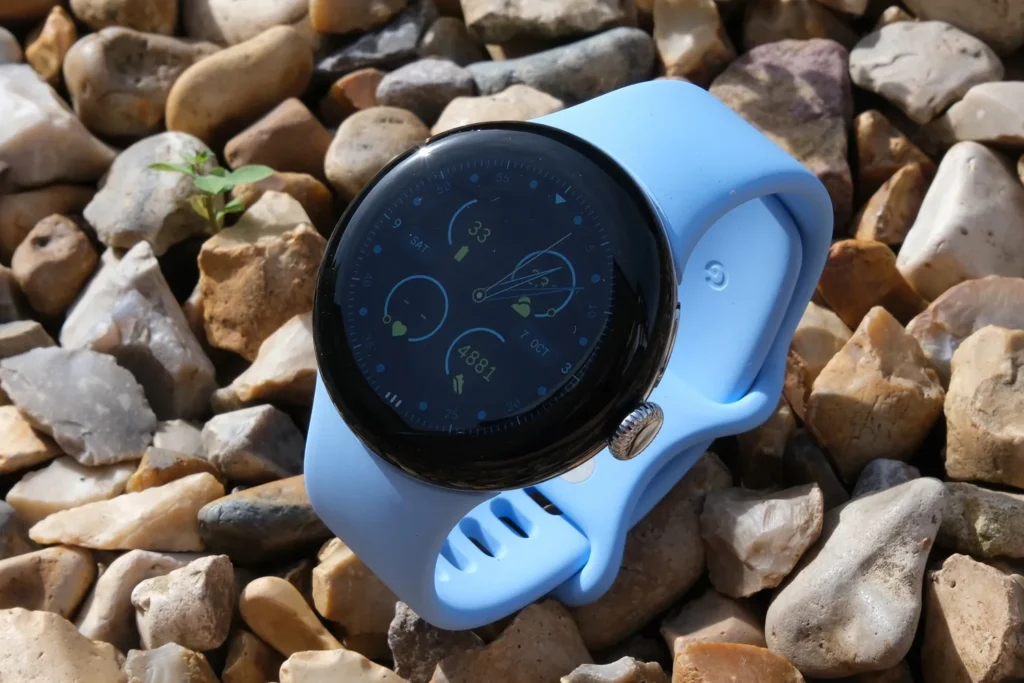
The Pixel Watch 2 emerges as a commendable evolution, addressing key shortcomings of its predecessor with additional health sensors, a faster processor, and a slightly extended battery life. Priced at $350, the Pixel Watch 2 presents a more well-rounded smartwatch, but the burning question remains: is it truly worth upgrading from the original Pixel Watch? Having tested both iterations, the Pixel Watch 2’s enhancements are notable, yet recommending an immediate upgrade requires careful consideration. Some advanced features, such as automatic workout detection and new health metrics, are slated to reach the older Pixel Watch via an upcoming update. Moreover, the original Pixel Watch continues to receive software updates, including the recent transition to Wear OS 4 in October, showcasing ongoing support and feature additions. Unless the Pixel Watch 2’s passive stress monitoring is a must-have for you, it might be prudent to hold out for the potential advancements in the Pixel Watch 3. Notably, the first Pixel Watch is still available for $280, presenting an enticing option, albeit $70 cheaper than its successor. While budget considerations may lean towards the original model, those with room in their budget may find the Pixel Watch 2’s new processor and larger battery worthwhile for extended longevity.
Pixel Watch 2 vs. Pixel Watch: Design
The Pixel Watch 2 and original Pixel Watch look almost identical, and that’s a good thing. Both watches are available in a 41-millimeter size in polished silver, matte black and champagne gold color options. Like the first Pixel Watch, the new version has a curved glass screen that gives it an elegant look compared to most smartwatches. The same watch bands are compatible with both Pixel Watch models.
The only major aesthetic difference is the Pixel Watch 2’s aluminum casing, which replaces the original’s stainless steel build. While stainless steel does look more premium, the aluminum design makes the Pixel Watch 2 lighter than the first model at 31 grams versus 36 grams.
Pixel Watch 2 vs. Pixel Watch: Fitness and health tracking
One of my criticisms of the first Pixel Watch was that it lacked some of the health sensors found on Fitbit’s Sense 2 (Fitbit is also owned by Google), like a skin temperature reader and a sensor for measuring continuous electrodermal activity, or EDA, which is used for detecting potential signs of stress. While these omissions weren’t deal-breakers, it felt like an odd choice considering the Pixel Watch’s higher price and otherwise Fitbit-centric experience.
That’s no longer the case with the Pixel Watch 2. Google’s new smartwatch gains both a skin temperature sensor and that EDA sensor, bringing it up to speed with Fitbit’s offerings. That means you’ll get notifications throughout the day when the Pixel Watch 2 detects possible signs of stress or excitement, which makes the second model a better choice than the first Pixel Watch for those looking to keep tabs on their stress levels.
The Pixel Watch 2’s other major health feature, and the more important one, is irregular heart rhythm detection. While the first Pixel Watch can take an ECG and alert you if your heart rate is too high or low, it can’t notify you if it detects an irregular heart rhythm. That could be critical for those interested in a smartwatch primarily for cardiac health, although it’s important to remember that smartwatches aren’t meant to replace medical devices.
When it comes to exercise tracking, the Pixel Watch 2 and original Pixel Watch have a lot in common. The big difference is that the Pixel Watch 2 has a couple of new training tools to help you run at a certain pace and remain in specific heart rate zones during a run. These modes certainly motivated me to pick up the pace during a run, although proper running watches will have more robust tools. But Google’s website indicates these features will be arriving on the first Pixel Watch in the future, too.
The case is the same with automatic workout detection. Unlike the first Pixel Watch, the Pixel Watch 2 can automatically start and stop certain exercises, such as running, walking, rowing and spinning, after you’ve been working out for a certain amount of time. This is a standard feature on most smartwatches and fitness trackers, but it’s one area where the original Pixel Watch was lacking compared to its rivals. However, Google’s website also says auto workout mode will be coming to the original Pixel Watch.
Compared to last year’s model, the Pixel Watch 2 also has a new heart rate sensor with multiple points of contact, which I found to be impressively accurate when compared against a chest strap heart rate monitor. Otherwise, both watches offer many of the same health, fitness and wellness tracking features, such as sleep monitoring, high and low heart rate alerts, overnight blood oxygen levels, and a built-in GPS for tracking outdoor workouts.


